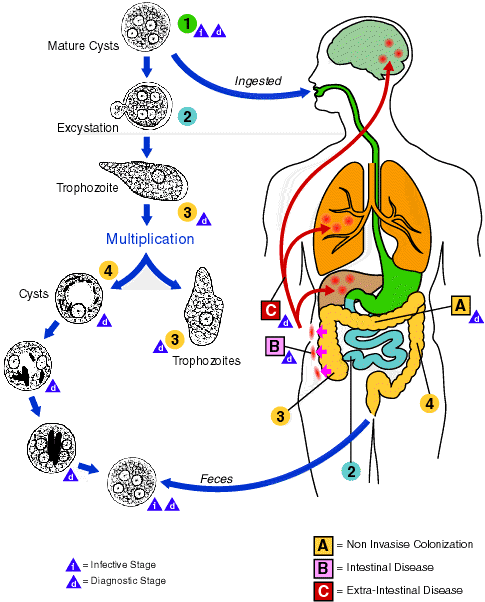- "Infection by Entamoeba
histolytica occurs by ingestion of mature
cysts 1 in fecally contaminated food, water, or
hands.
- Excystation 2 occurs in the small intestine and
trophozoites 3 are released,
which migrate to the large intestine. The
trophozoites multiply by binary fission and
produce cysts 4 , which are
passed in the feces.
- Because of the protection
conferred by their walls, the cysts can survive
days to weeks in the external environment and are
responsible for transmission.
- (Trophozoites can also be
passed in diarrheal stools, but are
rapidly destroyed once outside the body,
and if ingested would not survive
exposure to the gastric environment.)
- In many cases, the
trophozoites remain confined to the
intestinal lumen ( A: non-invasive infection) of
individuals who are thus asymptomatic
carriers and cysts passers. In some
patients the trophozoites invade the
intestinal mucosa ( B: intestinal disease), or,
through the bloodstream, extraintestinal
sites such as the liver, brain, and lungs
( C: extra-intestinal disease),
with resultant pathologic manifestations.
It has been established that the invasive
and noninvasive forms represent separate
species, respectively E. histolytica
and E. disparindistinguishable.
- Transmission can , which are
morphologically also occur through fecal exposure
during sexual contact (in which case not only
cysts, but also trophozoites could prove
infective)."
- Courtesy of the Division of
Parasitic Diseases at the National Center for
Infectious Diseases, Centers for Disease Control
and Prevension (public domain)
- http://www.dpd.cdc.gov/DPDx/HTML/Amebiasis.htm
|
